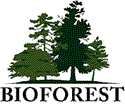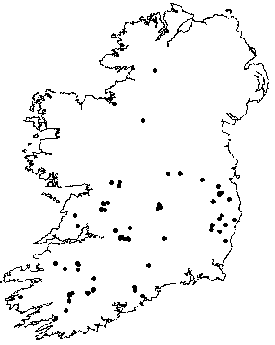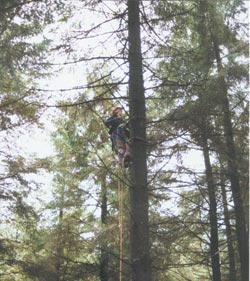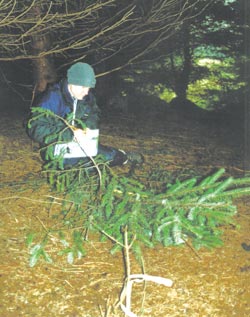| 2004 |

|
YEAR BOOK |
COFORD & EPA
|
BIOFOREST – Biodiversity in Irish forests
|

|

|

|
BIOFOREST is a large-scale research project running from 2001 to 2006 with the aim of providing much-needed basic information on biodiversity in Irish plantation forests. The project is equally co-funded by COFORD (the National Council for Forest Research and Development) and the Environmental Protection Agency (EPA) as part of the EPA's Environmental RTDI Programme 2000–2006.
Interest in biodiversity has grown tremendously over the last decade both through the various international conventions (e.g. Biodiversity and Climate Change) and the various EU and national biodiversity plans and legislation. Biodiversity serves a variety of roles on earth, from aesthetic and recreational, to provisional (such as food, medicines, building materials), to supportive (such as the various ecosystem functions that support and drive soil fertility, water quality, decomposition, biogeochemical cycles etc). Knowledge of the nature and extent of biodiversity and how it is affected by anthropogenic activities is thus vital to sustainable development and indeed to life.
The BIOFOREST project sets out to focus on forest biodiversity with the following three sub-projects:
-
Biodiversity assessment of afforestation sites;
-
Assessment of biodiversity at different stages of the forest cycle;
-
Investigation of experimental methods to enhance biodiversity in plantation forests.

Our results to date show that plantations can support diverse species assemblages over the forest cycle, but these contain a large proportion of generalist species and few species of conservation importance. However, mature stands develop a characteristic woodland flora and support forest specialist spiders and hoverflies. In terms of species richness a comparison of the ash and the Sitka component of stands in a non-intimate mix found no overall difference in diversity between the two. However, each component supported different species assemblages, so on a plantation scale overall biodiversity was increased by having ash as a component of a predominantly Sitka forest. The results support many of the management recommendations in the Forest Service Forest Biodiversity Guidelines, including the choice of site location and design of open spaces and boundary habitats at the forest planning stage. Key issues for forestry management are the importance of thinning in opening up the forest canopy, the retention of standing and fallen dead trees, and the retention of scrub habitat.


A major seminar on the work of BIOFOREST will be held in the autumn of 2005. Technical results and implications for management will be published after that date. Since 2001, there have been various presentations of the results, most recently four papers at the 14th Irish Environmental Researchers' Colloquium (January 2004) on: Biodiversity across the forest cycle in ash and Sitka spruce plantations, subtitled: Stand structure and vegetation change, Effects of Irish forestry on spider communities, Effects of Irish forestry on bird diversity, Comparison of trends between taxonomic groups and management recommendations.
Project participants
Dr Susan Iremonger is the project manager.
Department of Zoology, Ecology and Plant Science and the Coastal and Marine Resources Centre, University College, Cork: Professor Paul Giller, Professor John O'Halloran, Dr Tom Kelly, Dr Tom Gittings, Dr Mark Wilson, Dr Josephine Pithon, Ms Valerie Cummins, Ms Vicki O'Donnell, Ms Anne Oxbrough and Ms Julianna O'Callaghan
Botany Department, Trinity College, University of Dublin: Dr Daniel Kelly, Dr Fraser Mitchell, Dr Paul Dowding, Dr George Smith, Dr Anne-Marie McKee, Ms Saoirse O'Donoghue, Ms Laura French, Ms Linda Coote
Coillte Teoranta: Dr Aileen O'Sullivan, Mr Pat Neville
The project is advised by a Steering Group composed of experts from both Irish and international bodies including COFORD, EPA, National Parks and Wildlife Service, Forest Service, Centre for Ecology and Hydrology (UK), Forestry Commission (UK), University of Helsinki, and the European Environment Agency.
Contact: Dr Susan Iremonger, BIOFOREST, Botany Department,
Trinity College, University of Dublin, Dublin 2. Tel: +353-1-6083745.
E-mail: [email protected] ;
Web: http://bioforest.ucc.ie ; http://www.coford.ie ; http://www.epa.ie .